 | TODAY IN SCIENCE HISTORY NEWSLETTER - 1 JULY |
| Feature for Today |
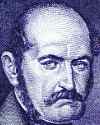 On 1 July 1818, Ignaz Semmelweis was born. You probably don't know his name. You should. His discovery was of life-saving significant. Joseph Lister may ring a bell in your mind for introducing antiseptic procedures. But Semmelweis was already onto it before Lister. In the article Pathfinders in Medicine: Semmelweis, the Obstetrician you'll learn how he realized the necessity of handwashing between making an autopsy of a deceased, often infected person, and going to attend to the next childbirth. Women were dying in large numbers due to rampant infection in hospitals. He solved that where he worked. But too many in the medical profession were not ready to learn from him. As a pioneer, he is now a hero, but then widely ignored, even despised by many. He died tragically too. On 1 July 1818, Ignaz Semmelweis was born. You probably don't know his name. You should. His discovery was of life-saving significant. Joseph Lister may ring a bell in your mind for introducing antiseptic procedures. But Semmelweis was already onto it before Lister. In the article Pathfinders in Medicine: Semmelweis, the Obstetrician you'll learn how he realized the necessity of handwashing between making an autopsy of a deceased, often infected person, and going to attend to the next childbirth. Women were dying in large numbers due to rampant infection in hospitals. He solved that where he worked. But too many in the medical profession were not ready to learn from him. As a pioneer, he is now a hero, but then widely ignored, even despised by many. He died tragically too.So, if the name is unfamiliar to you, honour his memory, by reading this biographical article from 1912. |
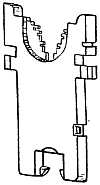 On 1 July 1886, the Tribune newspaper of New York City began the first commercial use in the U.S. of a new kind of machine (which you'll likely name in the quiz below). The image shows one of many similar parts used with this machine. On 1 July 1886, the Tribune newspaper of New York City began the first commercial use in the U.S. of a new kind of machine (which you'll likely name in the quiz below). The image shows one of many similar parts used with this machine.It was an important advance, and fully described in an interesting article in The Manufacturer and Builder (1889). |
| Book of the Day | |
| |
| Quotations for Today | |
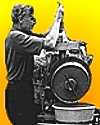 | "Advocacy of leaf protein as a human food is based on the undisputed fact that forage crops (such as lucerne) give a greater yield of protein than other types of crops. Even with connventional food crops there is more protein in the leafy parts than in the seeds or tubs that are usually harvested." |
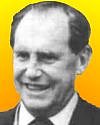 | "On foundations we believe in the reality of mathematics, but of course, when philosophers attack us with their paradoxes, we rush to hide behind formalism and say 'mathematics is just a combination of meaningless symbols,'... Finally we are left in peace to go back to our mathematics and do it as we have always done, with the feeling each mathematician has that he is working with something real. The sensation is probably an illusion, but it is very convenient." |
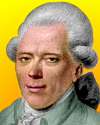 | "To see every day how people get the name ‘genius' just as the wood-lice in the cellar the name ‘millipede'—not because they have that many feet, but because most people don't want to count to 14—this has had the result that I don't believe anyone any more without checking." |
| QUIZ | |
| Before you look at today's web page, see if you can answer some of these questions about the events that happened on this day. Some of the names are very familiar. Others will likely stump you. Tickle your curiosity with these questions, then check your answers on today's web page. | |
| Births | |
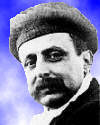 |  Louis Bl�riot, born 1 Jul 1872, was a French aviator who made the world's first over-water flight in a heavier-than-air craft. As a successful inventor of automobile lights and accessories, he had his own funds available to turn his interest in aviation. After experimenting with gliders and light-engine airplanes of various designs, on 25 Jul 1909 he flew his Bl�riot XI monoplane on his historic crossing. Louis Bl�riot, born 1 Jul 1872, was a French aviator who made the world's first over-water flight in a heavier-than-air craft. As a successful inventor of automobile lights and accessories, he had his own funds available to turn his interest in aviation. After experimenting with gliders and light-engine airplanes of various designs, on 25 Jul 1909 he flew his Bl�riot XI monoplane on his historic crossing. What body of water did he cross? What body of water did he cross? |
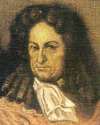 |  Gottfried Wilhelm Leibniz, born 1 Jul 1646, was a German philosopher, mathematician, and political adviser. Through meeting with such scholars as Christian Huygens in Paris and with members of the Royal Society, including Robert Boyle, during two trips to London in 1673 and 1676, Leibniz was introduced to the outstanding problems challenging the mathematicians and physicists of Europe. He independently discovered (published 1684) certain mathematical procedures, but became involved in a bitter priority dispute with Isaac Newton, whose similar ideas were developed earlier (1665), but published later (1687). Gottfried Wilhelm Leibniz, born 1 Jul 1646, was a German philosopher, mathematician, and political adviser. Through meeting with such scholars as Christian Huygens in Paris and with members of the Royal Society, including Robert Boyle, during two trips to London in 1673 and 1676, Leibniz was introduced to the outstanding problems challenging the mathematicians and physicists of Europe. He independently discovered (published 1684) certain mathematical procedures, but became involved in a bitter priority dispute with Isaac Newton, whose similar ideas were developed earlier (1665), but published later (1687).  What mathematical idea did they independently invent? What mathematical idea did they independently invent? |
| Deaths | |
 |  A U.S. engineer and architect (1895-1983) developed the geodesic dome, the only large dome that can be set directly on the ground as a complete structure, and the only practical kind of building that has no limiting dimensions. A U.S. engineer and architect (1895-1983) developed the geodesic dome, the only large dome that can be set directly on the ground as a complete structure, and the only practical kind of building that has no limiting dimensions. Can you name this man? Can you name this man? |
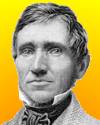 |  An American inventor of the vulcanization process (1800-1860) made possible the commercial use of rubber. Originally the use of rubber was limited since it would freeze hard in winter and become gummy in summer. After years of persistent experimentation, he mixed and baked sulfur and rubber together, creating a tough, cured compound that could withstand the heat and stress. A rubber company was named in his honour. An American inventor of the vulcanization process (1800-1860) made possible the commercial use of rubber. Originally the use of rubber was limited since it would freeze hard in winter and become gummy in summer. After years of persistent experimentation, he mixed and baked sulfur and rubber together, creating a tough, cured compound that could withstand the heat and stress. A rubber company was named in his honour.  Can you name this man? Can you name this man? |
| Events | |
 On 1 Jul 1886, the first machine of its type was put into commercial use in the U.S. when it was installed at the Tribune newspaper of New York City On 1 Jul 1886, the first machine of its type was put into commercial use in the U.S. when it was installed at the Tribune newspaper of New York City What machine was this? What machine was this? | |
 |  On 1 Jul of a certain year, the first completely automatic bread plant in the U.S. was opened by the Ward Baking Company of Chicago, Illinois. The dough was not touched, nor the bread handled until it was placed on the wrapping machine. On 1 Jul of a certain year, the first completely automatic bread plant in the U.S. was opened by the Ward Baking Company of Chicago, Illinois. The dough was not touched, nor the bread handled until it was placed on the wrapping machine. In what decade was this? In what decade was this? |
| Answers |
When you have your answers ready to all the questions above, you'll find all the information to check them, and more, on the July 1 web page of Today in Science History. Or, try this link first for just the brief answers. Fast answers for the previous newsletter for June 30: Australia; Charles Darwin; Audion vacuum tube - a triode; argon; to keep the super-accurate atomic clocks in step with the Earth's rotation; the decade including the year 1953; solar eclipse. |
| Feedback |
 If you enjoy this newsletter, the website, or wish to offer encouragement or ideas, please send feedback by using your mail reader Reply button. If you enjoy this newsletter, the website, or wish to offer encouragement or ideas, please send feedback by using your mail reader Reply button. |
--
If you do not want to receive any more newsletters, Unsubscribe
To update your preferences and to unsubscribe visit this link


Δεν υπάρχουν σχόλια:
Δημοσίευση σχολίου